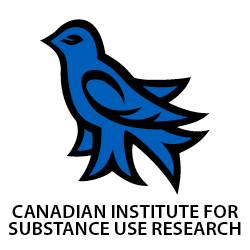This summer I got an email from a concerned nurse. In June, the Canadian Centre for Substance Abuse, and UBC’s Mass Gathering Medicine Interest Group released their recommendations for Preventing Drug- and Alcohol-related Harms at Music Festivals. As a nurse who works with live music events, she was encouraged to see that many of the recommendations were already being implemented locally, but wanted to talk about strategies to reducing barriers that some festivals were encountering when seeking to offer substance testing at events.
This nurse was looking to start conversations with communities and event holders about how to standardize access to recommendations on this list, with full support of police and stakeholders to create safer events, leading to less drain on the emergency services in the communities they are held. But where do we even start?
Shambhala Music Festival has set the bar for harm reduction. For many years, the Shambhala music festival has provided a safe space where attendees can bring unidentified substances to volunteer care providers, where they are tested using a chemical testing kit. The goal is one of harm reduction, aiming to reduce consumption of dangerous contaminated substances, as well as create better education and dialogue surrounding substance use at big events.
However, this isn’t so easy at many large events. Earlier this summer, the Evolve Festival, another electronic music event in Halifax, experienced a challenge. Similar to Shambhala, Evolve had planned to offer substance testing at the festival. However, days before the event, insurance providers threatened to shut down the festival if drug testing was offered. Despite evidence that substance testing in festival settings may help reduce overdoses and improve education for substance users, there are still legal barriers surrounding the use of testing kits. In response to testing kit use at festivals, the Nova Scotia RCMP stated that “The RCMP is all about public safety. However, we don’t support any initiatives that will condone illicit drug use, and these kits do condone illicit drug use”.
Fear of losing insurance coverage, concern about RCMP support and legal barriers surrounding the use of testing kits, as well as a lack of clear policy about this harm reduction measure, make it difficult for festivals and events to offer harm reductions services that include substance testing.
Enter the conversation with my concerned nurse colleague. Together, we struggled to think about potential solutions. Anyone who has worked at, or attended, large music events can tell you that substance use is common, and, promising harm reduction strategies are not always present. So, how do we bridge the gap demonstrating a need for better access to testing sites and improved education systems surrounding drugs? It seems that one of the barriers preventing change is a lack of good data demonstrating the patterns of use, perspectives and knowledge of young people surrounding illicit substances.
Together, we decided to address this problem. We created a nation-wide survey designed to assess the understanding, use, and opinions of young people concerning drugs. Our aim is to examine the perspectives of younger substance users, and determine whether there is the potential for better testing and education opportunities at large gatherings. It is our hope that this survey will result in data that event and festival organizers can use in conversations with community stake-holders, agencies, insurance providers, security teams and patrons to help maximize opportunities for event safety. We also hope the findings will be of benefit to harm reduction organizations and educators who are looking to address gaps in young people’s knowledge of substance use.
You can take the survey HERE. It’s completely anonymous, and your identity will never be linked to your data. Your input could help improve the safety of recreational substance users both in festival settings and in other situations in the future.
There’s a real need for better harm reduction and education for young people surrounding substances. Let’s start talking about it.
Authors:
Kimberly Girling is a Ph.D. candidate in Neuroscience at UBC with a strong interest in global health and accessible medicine. She has done extensive work with the Student Biotechnology Network in BC, and currently volunteers with the Canadian Drug Policy Coalition in Vancouver.
Stacey Forrester is a harm reduction nurse from Vancouver BC. She is involved in many projects aimed at creating health and increasing access to safer spaces, via education, feminism, and urban planning.
**Please note that the material presented here does not necessarily imply endorsement or agreement by individuals at the Centre for Addictions Research of BC




Comment
Great work and thank you!